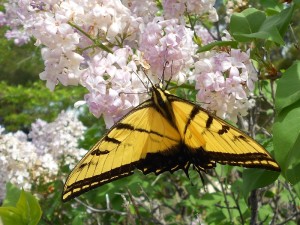Have you seen bugs crawling into your living space?
Are they damaging your garden?
Want to manage or get rid of them?
Don’t reach for toxic bug sprays – there is a non-toxic better way!
I am talking about:
- Cockroaches
- Earwigs
- Grasshoppers
- Ants
- Crickets
- Also Dust mites and bed bugs
- Even fleas on pets!
Wait a minute!
Let’s back up and consider that all insects serve a purpose in nature and they belong here. When we establish a living space, we want it to be protected from certain forces of nature, so we set some limits.
We may wish to relocate bugs found inside the house. But we also may want to see where we are attracting them in, and stop it.
One summer we had an ant invasion, but when we stopped keeping compost on the counter, cleaned our dishes immediately, and kept the sink clean, we saw less of them. So being aware of our habits which are invitations to insects is a key place to begin.
In the Garden
 As previously mentioned, insects are a part of nature. In fact, the insect population can be a measure of the health and balance of your garden, your little slice of nature. Are the plants provided with what they need to flourish – water, sun, suitable soil, nutrients? Are they surrounded with companion plants?
As previously mentioned, insects are a part of nature. In fact, the insect population can be a measure of the health and balance of your garden, your little slice of nature. Are the plants provided with what they need to flourish – water, sun, suitable soil, nutrients? Are they surrounded with companion plants?
Certain insects will be attracted to plants with a certain imbalance. They help in the bigger picture of nature by destroying other insects or unhealthy plants.
Without getting into this deeper, let’s explore what to do when you have determined that the best course of action is to actually kill the insects.
There is a simple remedy to protect your house from insects, treat garden plants when needed, and even protect your pets: Food Grade Diatomaceous Earth.
Diatomaceous Earth. What’s that?
Diatomaceous Earth, or DE, looks like a fine powder and is the fossil deposits of microscopic shells of one-celled organisms called Diatoms from ancient lake bottoms.
Do you remember studying single-celled organisms in biology class? The Diatom is a class of algae and mostly occur as microscopic single cells. What makes them unique in the phytoplankton world is that they are enclosed in a cell wall made of organic silica. The form of the cell wall is usually symmetrical with two matching sides. This is where they get the name diatom: literally, “through cut-in-half”. They are really ancient, probably originating in the Jurassic period.
It is the amorphous silica in the shell of the diatom that is significant, as it is really, really hard, and it is organic, not crystalized. So hard, in fact, that when powdered, there are still sharp surfaces. We will see how this is important later. In addition, the amorphous form (or “not form”) of silica is important to its safety.
How does DE work for insect control?
Food grade Diatomaceous earth works in a mechanical manner to injure and kill insects without being harmful to humans and pets.
Insects have a waxy outer layer to their shell, the exoskeleton, which protects them by keeping a balance of water inside and outside. The fine powder of diatomaceous earth absorbs the fats from that waxy layer, with the end result being damage to this protective layer, leading to dehydration and death. No toxins at all are involved, so therefore there is no tolerance built up to the treatment. It works each and every time on succeeding generations of insects.
Here is an article in the Journal of Pest Science 2006 that shows how effective DE is for controlling cockroaches and silverfish.
Are there different diatomaceous earths?
Yes, diatomaceous earth can be obtained in food grade as well as another grade for filters.
Food grade diatomaceous earth is generally safe for humans and pets. The particle size is less than 12 micrometers. It is 85% silica in an amorphous form, which is less harmful to the lungs than crystalline silica. As with any dust, it is prudent to wear a mask when applying it as it can get in the air and inhaled.
Diatomaceous earth for filters usually comes from salt water deposits and has been heated to high temperatures to remove impurities and undesirable volatile constituents. It is not for human consumption and is not effective as an insecticide. The particles are larger than the food grade DE and contains a large proportion of crystalline silica, usually more than 60%.
This DE that has been heated, called calcinated, is used in many processes for filtering. It is used in swimming pool filters, but also in fish tank filters and to filter water for drinking. In addition, the beer and wine making industries use it to filter their products. Another use is to filter syrup, sugar, and honey. The advantage of using DE as a filter is that it will not alter the color, taste, or nutrients of the food or beverage.
How do I use DE as an insecticide?
A few key points:
Start by removing any visible insects inside your home. Depending on what you wish to target, consider:
- hiding places like cracks and crevices
- the joints of furniture
- around the garbage can
- you may use a black light at night to find scorpions
The insects must come into contact with the dry DE to be affected.
For prevention, put a line of diatomaceous earth around the perimeter of your house.
Check out the many applicators available here.
For more detailed instructions, see the website diatomaceaousearth.com for articles on:
- ants and ant trails and ant hills
- aphids
- bedbugs
- cockroaches
- fleas on cats and dogs and in the home
- fly
- hornets
- scorpions
- slugs
- spiders
- ticks
- wasps
What about for my pets?
 Where there is fur and pets, you can bet you can find fleas.
Where there is fur and pets, you can bet you can find fleas.
Cats and dogs can bring the fleas into the home, where they will breed. Where? Just about anywhere they land: on the carpet, in the dog or cat bed, on the furniture . . .
Diatomaceous earth can be applied directly to all these places. This is safe for the dogs and cats, even if it is eaten.
DE can be used as a repellent as well by dusting your dog or cat after playing outside where there might be fleas. It is important to bathe the dog or cat in a few days, combing with a flea comb to get them out. As the DE dries out the insect’s exoskeleton, it can also dry the pet’s skin. See this article for dogs and this article for cats for more information.
DE for people
Yes, people do eat diatomaceous earth, even if it is technically not approved by the FDA to eat, but it is generally recognized as safe (GRAS) in the manufacturing of food items.
The benefits for people of eating diatomaceous earth center around three properties:
- its mineral content, especially the silica
- it chelating effect with heavy metals in the bloodstream for detoxification
- its ability to kill intestinal parasites
Silica and other minerals
Remember that the diatoms in DE have a cell wall loaded with silica? This mineral is used in our body in our connective tissues, bones, hair, teeth, nails, pancreas and heart. As our soils have gotten demineralized, it is difficult to get enough from the foods we eat.
DE also contains trace amounts of calcium, magnesium, iron, potassium, sodium, titanium, boron, manganese, copper, and zirconium.
Chelate heavy metals
I don’t have a reference to any studies that show the chelation properties of DE. However, since the diatoms have the shape of tiny cylindrical honeycombs which are negatively charged, it is claimed that the positively charged heavy metals are pulled inside, and then eliminated when the DE is eliminated from the body.
Intestinal parasites
The sharp edges of the diatoms are reputed to cut up intestinal parasites. As well, the negatively charged interior of the honeycombs of the diatoms are reputed to attract debris and bacteria, viruses, protozoa, endotoxins, drug residue, and pesticides.
Eating DE
Most proponents of eating DE recommend starting with a low dosage, even 1/4 teaspoon in water or juice once or twice a day. It can be increased gradually in increments up to a heaping Tablespoon twice a day.
It may be mixed in water or juice, or stirred into food. It will not dissolve, so stir the drink to keep it suspended in order to not leave it at the bottom of the glass.
The most reported effect to watch out for is loose bowels and other cleansing reactions.
Reported benefits include
- normalized bowel movements
- lower cholesterol
- lowered high blood pressure
- arthritis pain relief
- increased energy
- smoother complexion
- sinus relief
Is DE right for you? Call 928-649-9234 for an appointment and Dr. Cheryl can help you determine that.
WANT TO USE THIS ARTICLE IN YOUR NEWSLETTER OR WEB SITE?
You can, as long as you include this complete blurb with it: “Naturopathic Physician Dr. Cheryl Kasdorf is a doctor who listens and has answers with a natural approach that works. She is known as the go-to person to get back your get-up-and-go when it is gone, gone, gone. Get your FREE gift “Dr. Kasdorf’s Health Secrets for Feeling & Looking Great” at drcherylkasdorf.com



